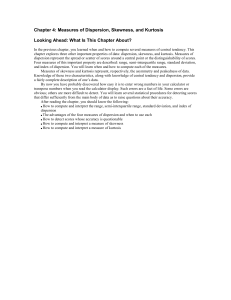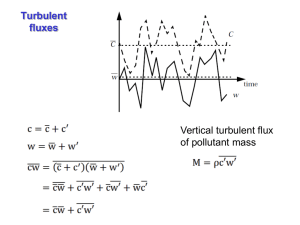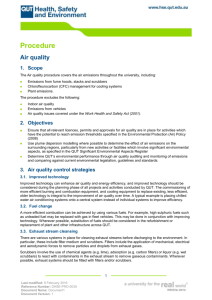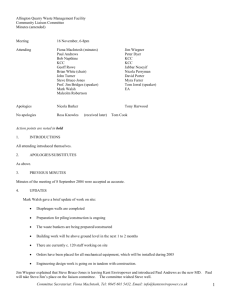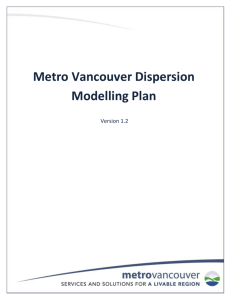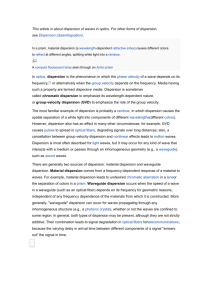Research Interests
advertisement
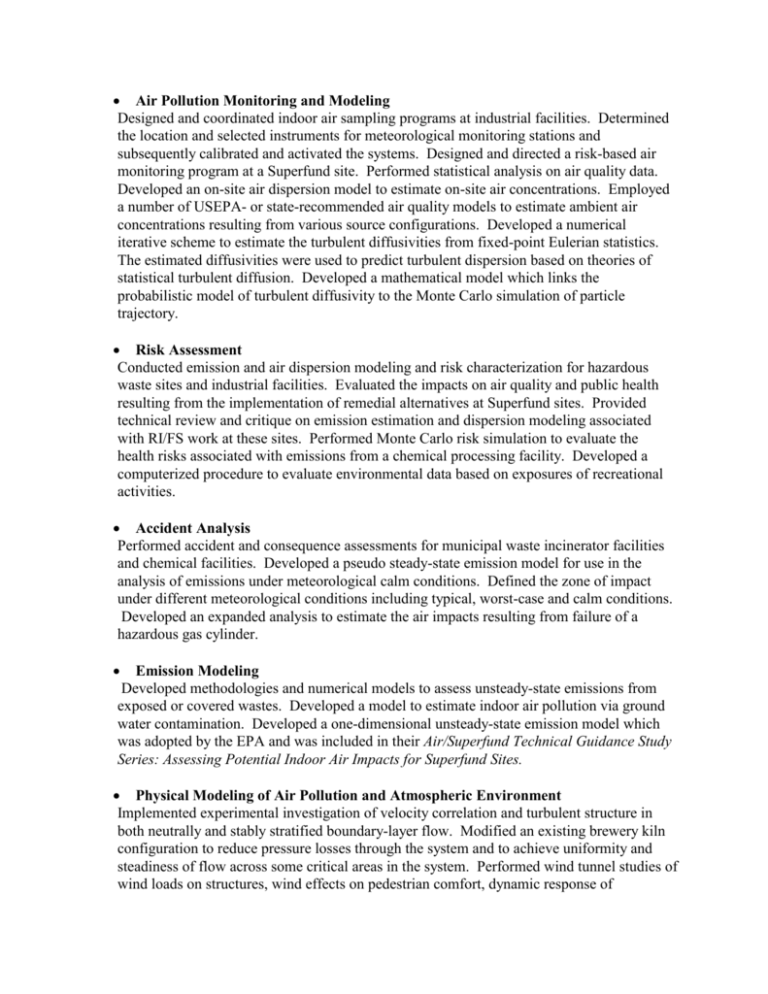
Air Pollution Monitoring and Modeling Designed and coordinated indoor air sampling programs at industrial facilities. Determined the location and selected instruments for meteorological monitoring stations and subsequently calibrated and activated the systems. Designed and directed a risk-based air monitoring program at a Superfund site. Performed statistical analysis on air quality data. Developed an on-site air dispersion model to estimate on-site air concentrations. Employed a number of USEPA- or state-recommended air quality models to estimate ambient air concentrations resulting from various source configurations. Developed a numerical iterative scheme to estimate the turbulent diffusivities from fixed-point Eulerian statistics. The estimated diffusivities were used to predict turbulent dispersion based on theories of statistical turbulent diffusion. Developed a mathematical model which links the probabilistic model of turbulent diffusivity to the Monte Carlo simulation of particle trajectory. Risk Assessment Conducted emission and air dispersion modeling and risk characterization for hazardous waste sites and industrial facilities. Evaluated the impacts on air quality and public health resulting from the implementation of remedial alternatives at Superfund sites. Provided technical review and critique on emission estimation and dispersion modeling associated with RI/FS work at these sites. Performed Monte Carlo risk simulation to evaluate the health risks associated with emissions from a chemical processing facility. Developed a computerized procedure to evaluate environmental data based on exposures of recreational activities. Accident Analysis Performed accident and consequence assessments for municipal waste incinerator facilities and chemical facilities. Developed a pseudo steady-state emission model for use in the analysis of emissions under meteorological calm conditions. Defined the zone of impact under different meteorological conditions including typical, worst-case and calm conditions. Developed an expanded analysis to estimate the air impacts resulting from failure of a hazardous gas cylinder. Emission Modeling Developed methodologies and numerical models to assess unsteady-state emissions from exposed or covered wastes. Developed a model to estimate indoor air pollution via ground water contamination. Developed a one-dimensional unsteady-state emission model which was adopted by the EPA and was included in their Air/Superfund Technical Guidance Study Series: Assessing Potential Indoor Air Impacts for Superfund Sites. Physical Modeling of Air Pollution and Atmospheric Environment Implemented experimental investigation of velocity correlation and turbulent structure in both neutrally and stably stratified boundary-layer flow. Modified an existing brewery kiln configuration to reduce pressure losses through the system and to achieve uniformity and steadiness of flow across some critical areas in the system. Performed wind tunnel studies of wind loads on structures, wind effects on pedestrian comfort, dynamic response of -2structures, and wind drags on various objects. Analyzed the wind statistics and provided design criteria for power transmission lines across complex terrain under strong wind conditions. Incineration and Solid Waste Management Completed a detailed, multipathway risk assessment for the proposed rehabilitation of the NYC Department of Sanitation's municipal solid waste incinerator in Southwest Brooklyn. Developed methodologies to predict chemical concentrations in soil, vegetables from backyard gardens, cows, milk, man-made pond, and fish in the river resulting from stack emissions. Evaluated the impact of atmospheric emissions from various New Jersey industries on air quality in New York City. Developed a screening approach for identifying the sources likely to have the greatest impact on New York City air quality. Rooftop Emission-Intake Design Investigated exhaust-intake cross-contamination and dispersion problems of rooftop emissions at various buildings. Provided solutions to improve the air quality at air intakes and downwind receptors through selections of stack heights and locations, addition of ventilation plenum, or reconfiguration of exhaust-intake geometry to reduce the existing cross-contamination and dispersion problems. Conducted fluid modeling of turbulent dispersion at a power plant to determine a Good-Engineering-Practice stack height to meet the USEPA regulations.






